WARNING!The following contains graphic images that some may find disturbingOn March 24, 1999, NATO under the guidance and leadership of the United States launched a bombing campaign against the Federal Republic of Yugoslavia (Serbia and Montenegro). NATO did not have the authorization of the United Nations. U.S. Congress also voted 427–2 against a declaration of war with Yugoslavia, and had voted to deny support for the air campaign in Kosovo. NATO's actions also seemed to be in violation of their own charter (Article 5 of NATO's charter restricts NATO's use of force to situations where a NATO member has been attacked and Yugoslavia was not a threat to any NATO member). The bombing, which lasted for a period of 78 days, significantly damaged Serbia's economy by destroying much of the country's infrastructures and industries. Thousands of innocent civilians died all in the name of "humanitarian bombing". In addition to bombing military targets, NATO also bombed civilian targets including schools and hospitals as well as residental areas. Thousands of people were left without water and electricity.
Why did NATO launch an unprovoked attack on a sovereign country?
BackgroundThe reasoning behind the bombing campaign was that it was a necessary action in order to stop the "ethnic cleansing" of "ethnic" Albanians from the Serbian province of Kosovo by Serbian forces. The problem is in fact that there was not an "ethnic cleansing" campaign.
Beginning in 1996, a predominantly Muslim Albanian terrorist group known as the Kosovo Liberation Army (KLA) began to target Serbian policemen and Serbian officials in Kosovo, hoping to create an Albanian uprising. In 1998, as the attacks intensified, the Serbian president Slobodan Milosevic sent in troops to squelch the Albanian rebellion. The result was an all-out war between the KLA and Serbian troops. In 1997, The U.S. State department classified the KLA as a terrorist organization. However, as the war intensified, the U.S. and the Western powers began to change their minds. In late 1998, the U.S. decided to back the Albanian seperatists. They formed diplomatic relationships with KLA leaders. The U.S., U.K., France and Germany began denouncing Milosevic, accusing Serbs of committing atrocities against Albanians in Kosovo and committing "ethnic cleansing". While there were some Albanian civilian casualties and many military casualties from both sides, there was no proof that a systematic campaign of ethnic cleansing was underway. The whole conflict was initiated by armed Albanian terrorists who wanted to create an independent Kosovo.
Nevertheless, the U.S. and NATO started threatening Serbia with possible bombings if they refused to withdraw their troops from Kosovo. On March 18, 1999, the Albanian, American and British delegation signed what became known as the 'Rambouillet Accords', a proposed peace agreement between Yugoslavia and a delegation representing the ethnic-Albanian majority population of Kosovo. The accords called for NATO administration of Kosovo as an autonomous province within Yugoslavia; a force of 30,000 NATO troops to maintain order in Kosovo; an unhindered right of passage for NATO troops on Yugoslav territory, including Kosovo; and immunity for NATO and its agents to Yugoslav law.
The Serbian delegation was prepared to accept the peace agreement except for one part of the agreement: Appendix B, which stated that: "NATO personnel shall enjoy, together with their vehicles, vessels, aircraft, and equipment, free and unrestricted passage and unimpeded access throughout the FRY including associated airspace and territorial waters. This shall include, but not be limited to, the right of bivouac, maneuver, billet, and utilization of any areas or facilities as required for support, training, and operations".
The Serbian side characterized this as "NATO occupation". On March 23, 1999, the Serbian parliament issued a statement agreeing that Kosovo should be given autonomy, but said that they would prefer that the United Nations took over instead of NATO.
In their statement, the Serbian government accused the "separatist-terrorist delegation of ethnic Albanians" of: "avoiding direct talks as it did not give up its separatist goals: to use autonomy as a means for establishing a 'state within a state'; to secure occupation of Serbia through the implementation of the political agreement; to create an ethnically pure Kosovo-Metohija under the pretext of protecting human rights and democracy; and to secure the secession of Kosovo-Metohija from Serbia with the help of their patrons and through an international protectorate and referendum."
The next day, NATO began their bombing campaign.
In the first two weeks of the bombing campaign, NATO bombed military targets. However after a week, it was clear that the bombing was not doing enough damage to Serbia. NATO realized that in order to make the Serbs submit to the New World Order, it would be necessary to be less prudent and more brutal. NATO intensified their attacks and began targeting civilians. As the campaign progressed, U.S. and NATO propaganda began to demonize Slobodan Milosevic and the Serbian people more strongly. Bill Clinton called the situation in Kosovo a "Genocide" and U.S. officials began to compare the crisis in Kosovo to the Holocaust. U.S. State department spokesman James Rubin was quoted as saying that: "More than 100,000 Albanians are feared dead..perhaps more".
The Kosovo war created a massive influx of Albanian refugees and even more after NATO decided to bomb. When forensic scientists visited Kosovo following the war, they found approximately 2000 bodies. Many of them could not be identified as Serbian or Albanian. It is generally believed that the total number of people who died in the war was 10,000 (both Serbian and Albanian).
The following are pictures of some of the crimes commited by the U.S. and some of their NATO allies during the 78 day terror campaign:
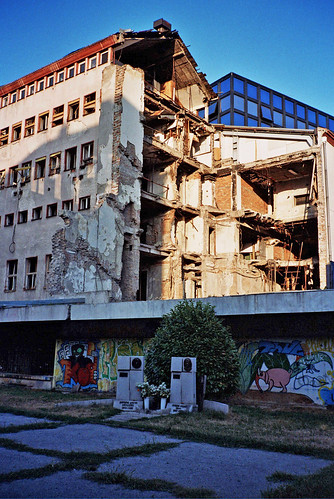
Building of Radio Television Serbia after it was bombed. NATO claimed that RTS was spreading "propaganda". 16 people were killed, mostly make-up artists.
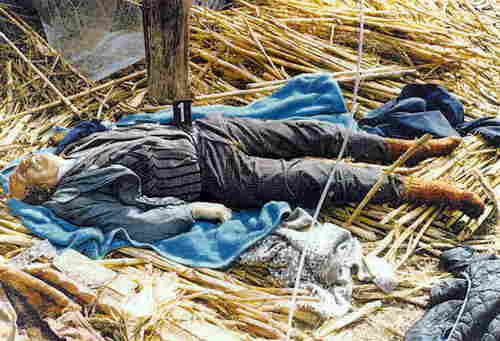
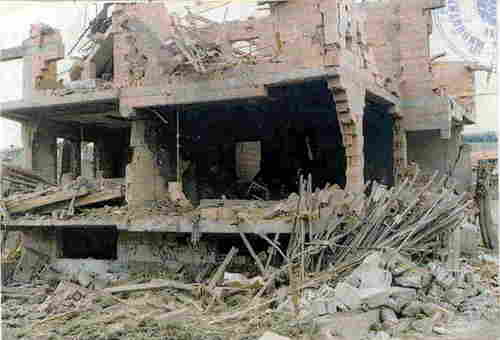
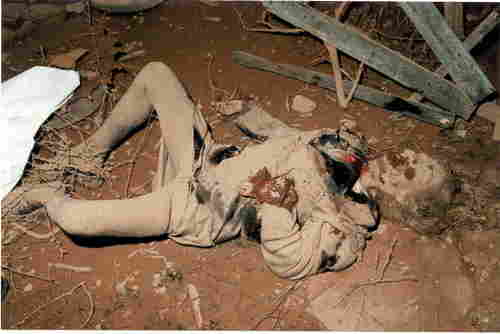
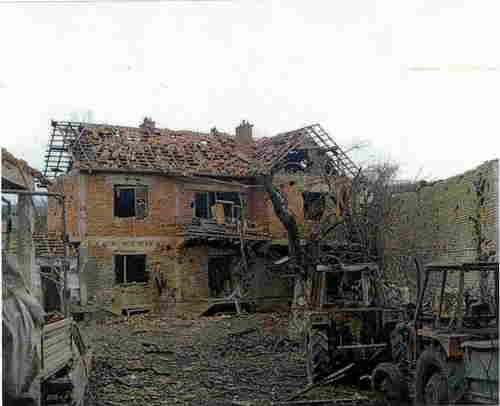
Body of Mileva Kuveljić in the courtyard of her house
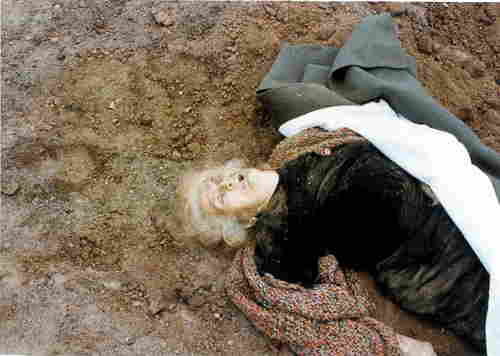
Body of Milica Grujić from Vranje, killed by two NATO missiles
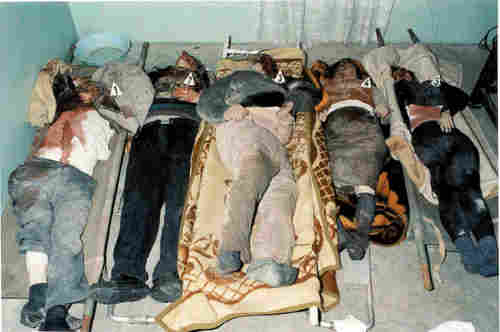
Bodies pulled out from debris: No. 1 Dragomir Miladinović;
No. 2 Velimir Stanković; No. 3 Jovan Radojičić; No. 4 Sofija
Radojičić; No. 5 Snežana Miladinović
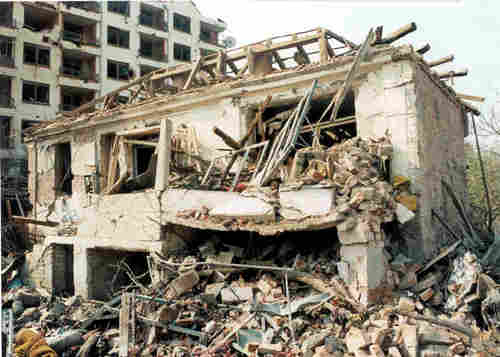
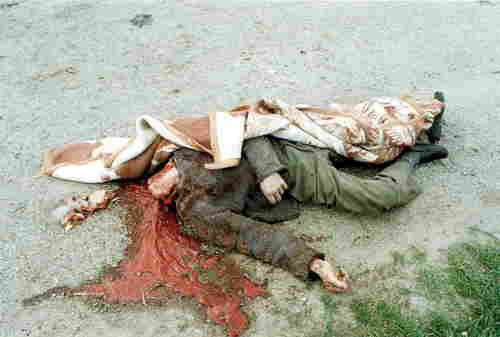
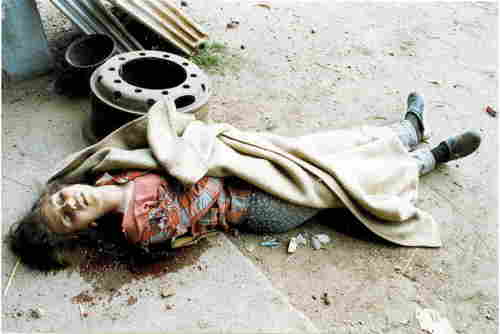
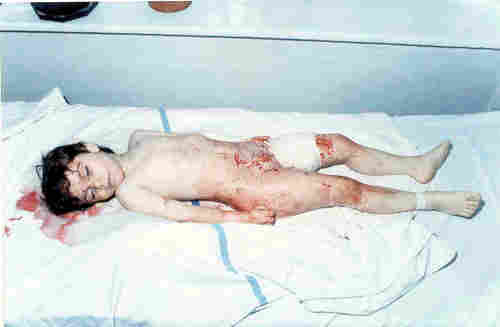
A 3-year old girl killed in her house
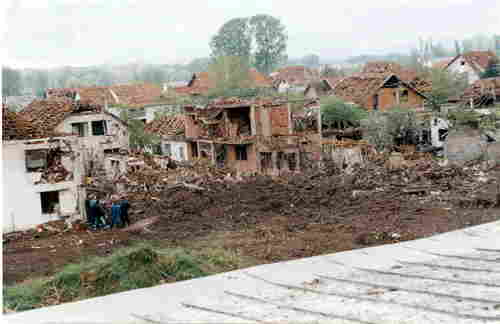
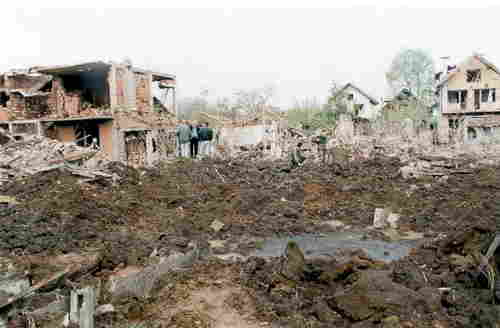
Demolished houses in Nis

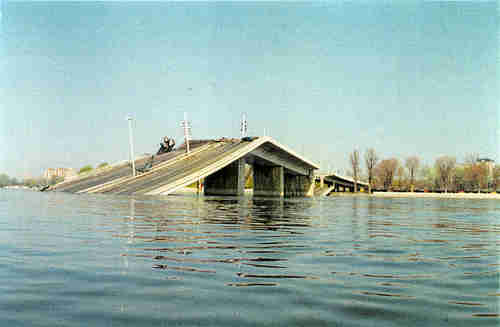
Demolished bridges
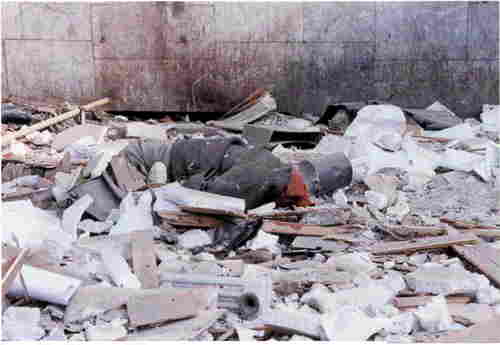
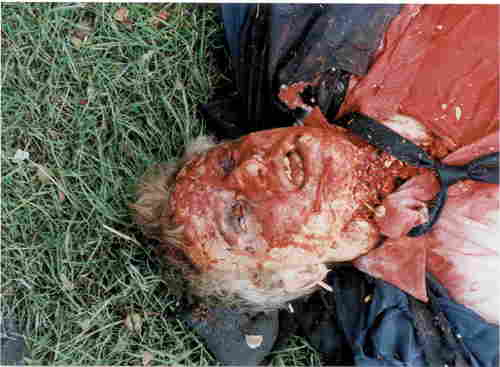
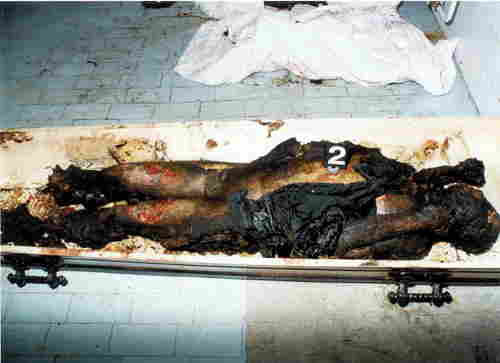

Charred bodies
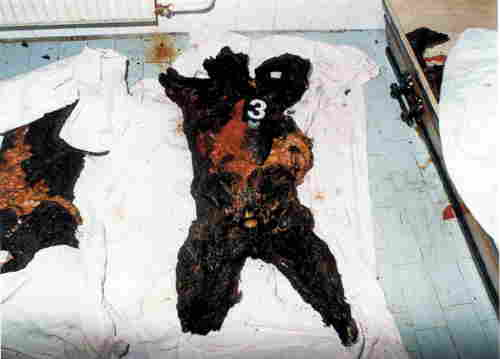

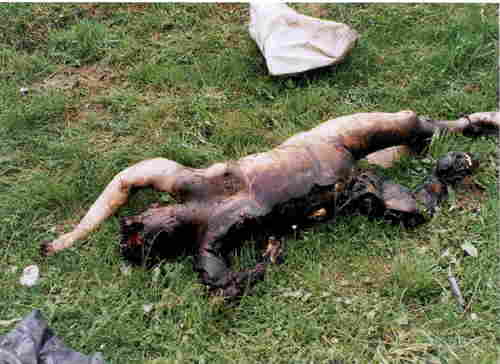
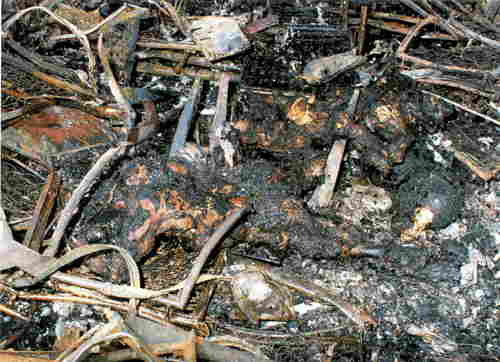
Charred bodies of nine passengers in the second carriage of a train attacked by NATO missiles

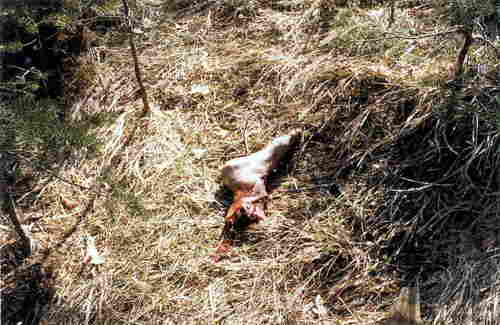
Destroyed Sports-Recreational Center Tornik


Bodies of Albanian refugees who were returning to their homes in cars, on tractors and carts, killed when NATO began an attack on an Albanian refugee convoy
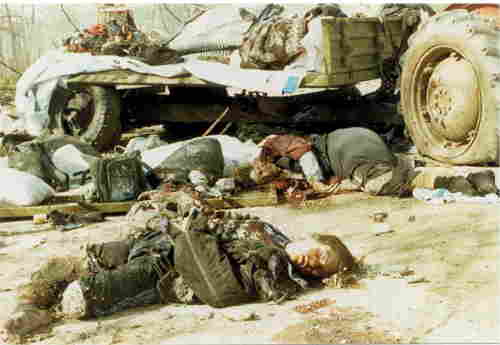

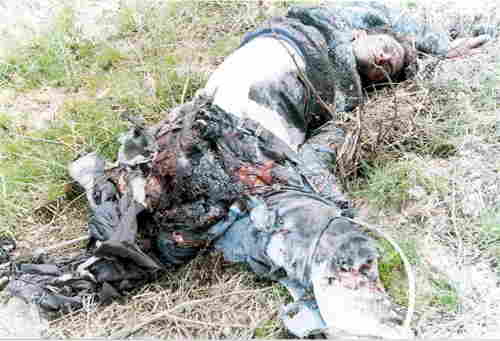
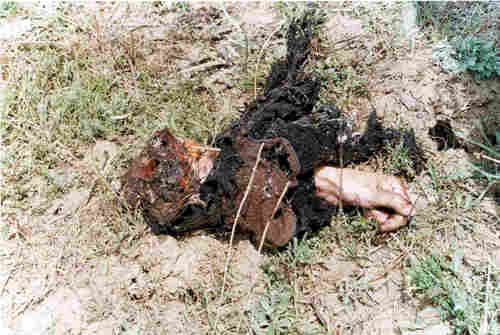
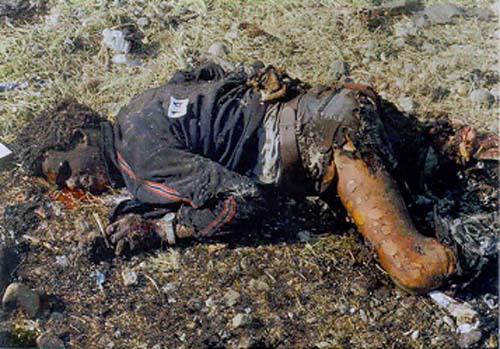
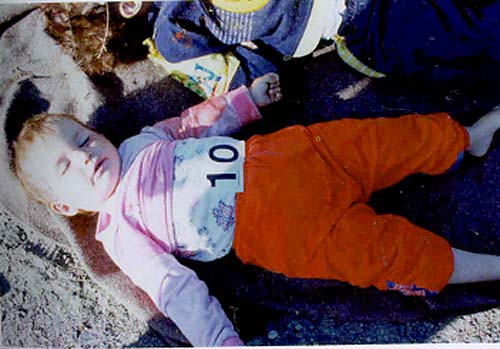
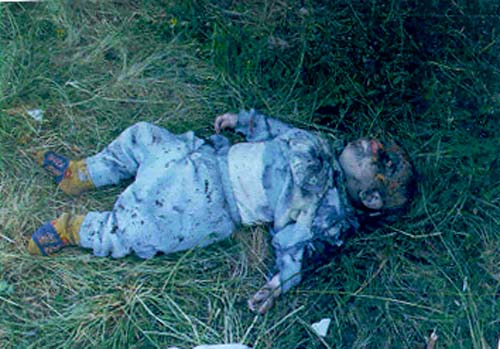


Serbian victims of the bombing of Varvarin. On a clear Sunday, 30 May 1999, shortly after 1 p.m., a bridge crossing the Velika Morava river in Varvarin was struck by laser-guided bombs fired by one or two low-flying NATO F-16 warplanes. The area around the bridge was filled with hundreds of people celebrating an Orthodox holiday in and around the nearby church, a market place and a fairground. No precautions against air attacks had been taken, as the town is far from Kosovo (approx. 200 km), the aged and narrow bridge was considered insignificant and no military installations were to be found within a radius of 20 km. Ten civilians were killed and 17 severely injured, some with permanent disabilities, in two attack waves a few minutes apart. Most of the casualties occurred in the second wave, when people had rushed to the bridge to help those wounded in the initial wave.




For more information including a full list of the attacks visit:
http://www.slobodan-milosevic.org/nato.htm